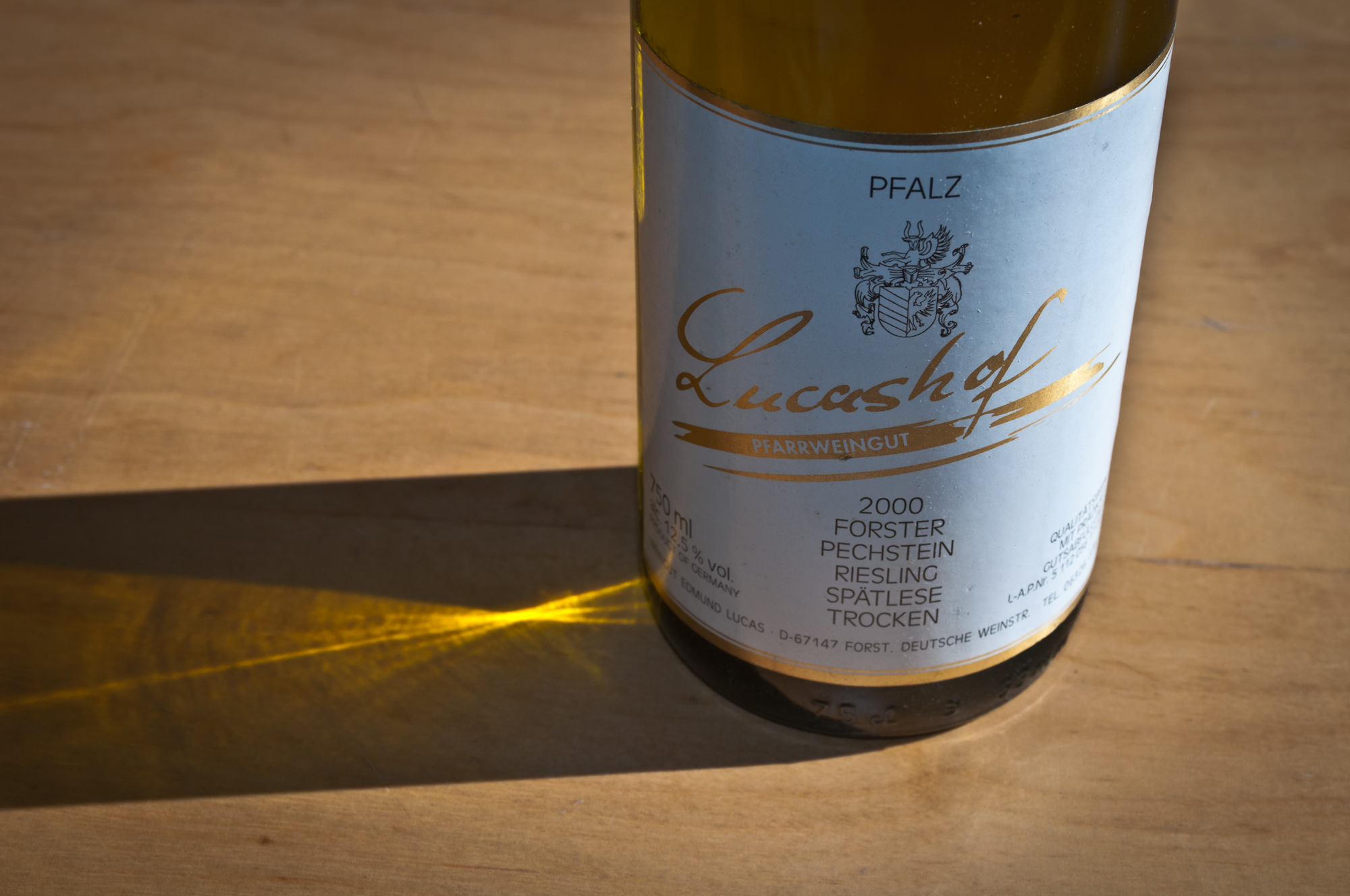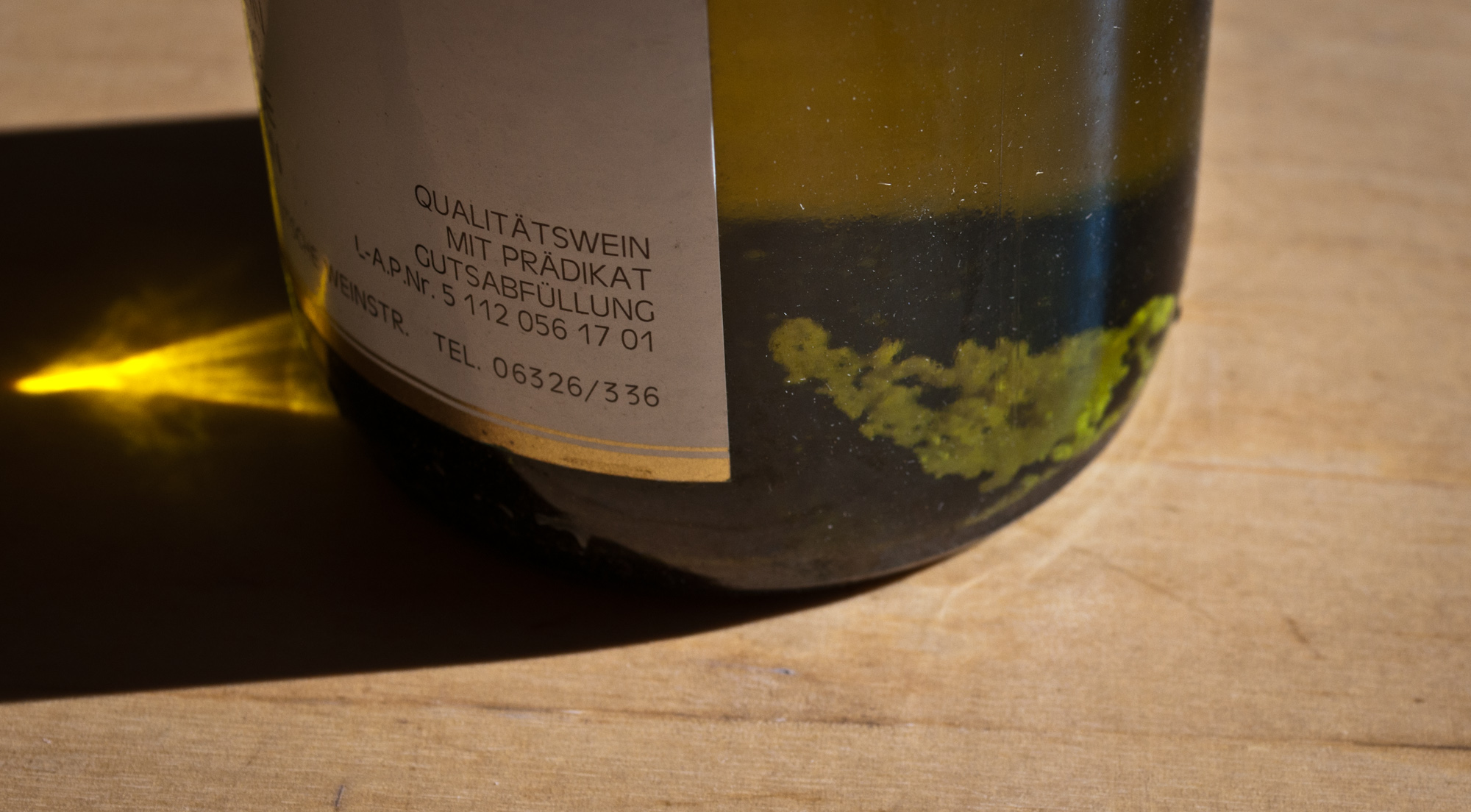Lucashof, Forster Pechstein, Riesling Spätlese trocken, 2000
Sometimes before going to bed I browse the websites of wine merchants and dream what I could order if only I had a proper wine cellar store wine long term (or, depending on the wine, a larger purchasing budget). During one of those sessions I came across a wine that seemed like the ideal solution to both problems: at over ten years of age it would not need more cellaring and at €9 it would not put a strain on my budget - considering the age it was a bargain.

I had heard of the Lucashof winery before, so I was curious to find out what one of their aged dry Rieslings (and from a well-know vineyard) would taste like.
Now, before you imagine me jumping up and down with excitement before opening the bottle there is a caveat. The 2000 vintage, well, was not without its problems, especially for grapes that, like Riesling, are harvested late; the end of the summer and early autumn were very rainy. Even so, I have had fantastic wines from supposedly dreadful vintages - it always depends on the location and the winemaker.
The first promising sign with regards to the Lucashof Riesling was a wonderfully intense gold colour, indicating age but also good drinking condition. Interestingly, it also had the most impressive collection of tartaric acid crystals I have seen in a long time. These crystals, while not exactly tasty, are perfectly harmless. Tartaric acids do in fact have a key role in stabilising wine, and sometimes they crystallise in the bottle.

The nose of the Lucashof had two of the classic signs of aged Riesling: petrol (or, in this case petroleum ether) and caramel notes. There were also fresh, fruity elements - lemon and orange peel. Overall it did not exactly feel spent, but certainly somewhat faded.
On the tongue the acidity was very prominent, a bit too much for my taste as (despite originally perhaps not totally bone-dry) the Riesling seemed to want a little sweetness to balance it. The wine was almost buttery and a little waxy on the tongue, with nut and furniture polish flavours and grapefruit in a fairly long finish. Undeniably there was a certain smoothness, but also not too much depth.
An aged Riesling with good parts, but overall not the harmony and balance or depth you would look for in such a wine. It either wasn't too great to start with or perhaps in the ageing process the fruit components that could have brought it all together had faded too much, making it a little too bitter and acidic. On the other hand it had a smooth and creamy texture, interesting moments and a fairly long finish - so you find me somewhat torn in my opinion on this wine. I would definitely recommend it more to the Riesling curious than the average wine drinker.
